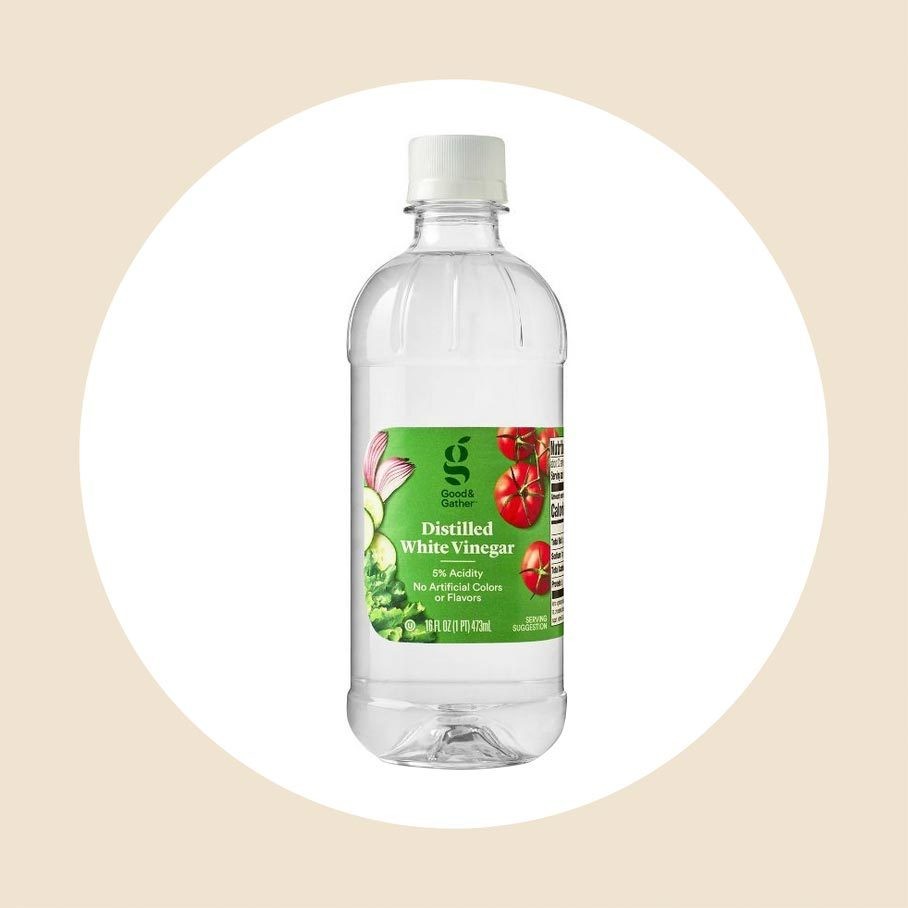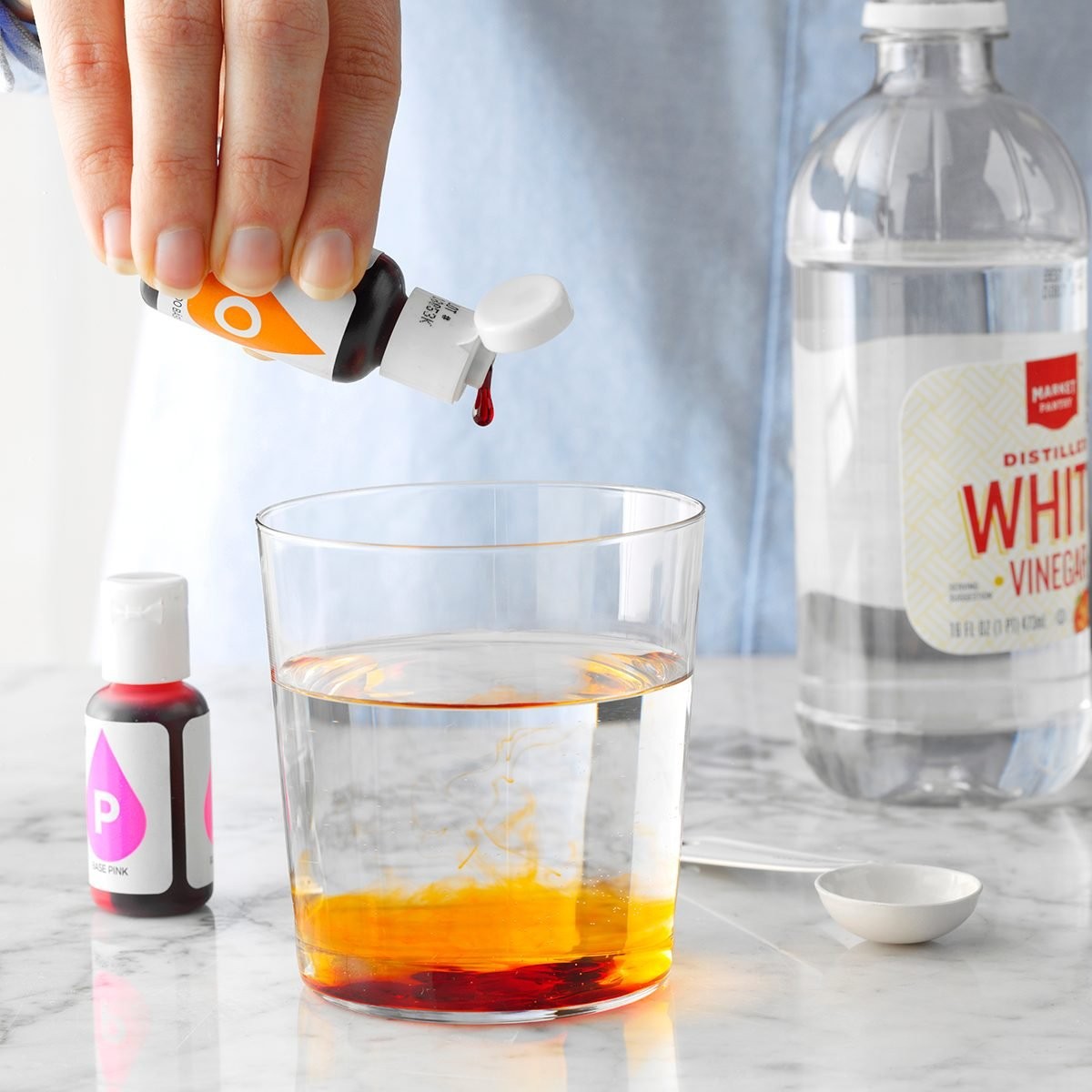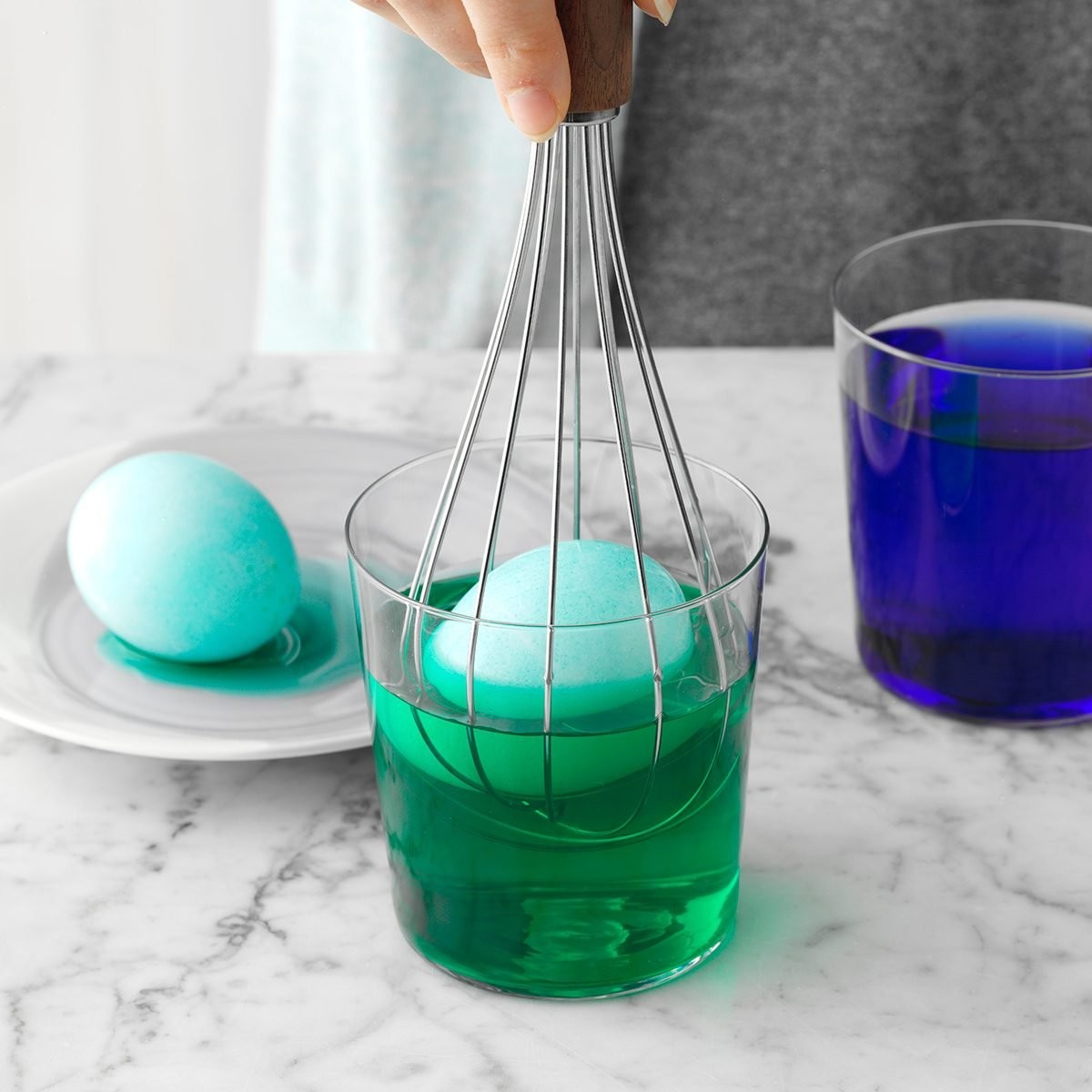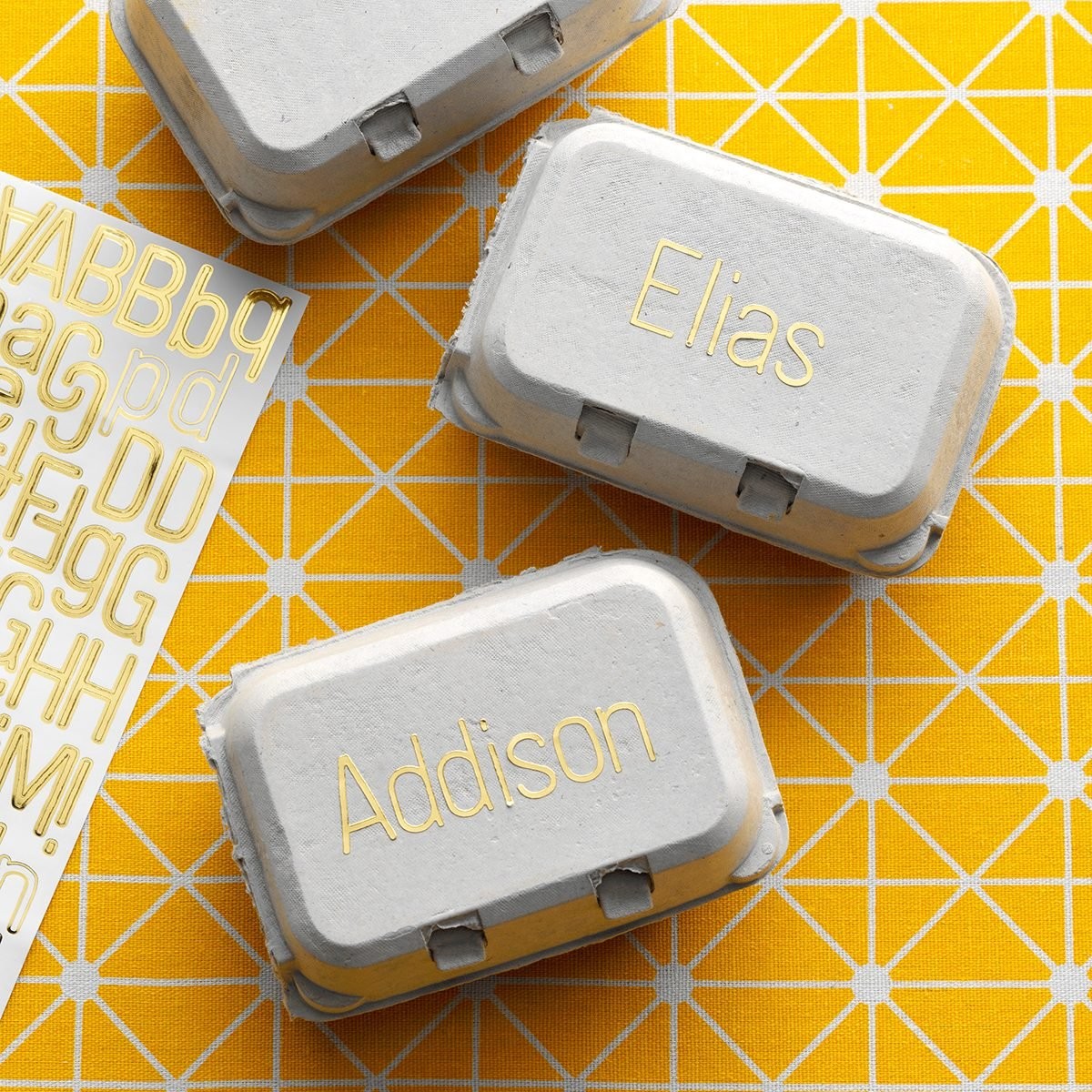Dye hard boiled eggs with food coloring is an engaging activity, especially during festive seasons, and FOODS.EDU.VN provides you with a straightforward method to achieve vibrant, beautifully colored eggs. Forget complicated kits; with simple ingredients like food coloring, white vinegar, and water, you can create stunning Easter eggs right at home. Learn the best techniques for achieving bright, even colors, exploring creative color combinations, and discover expert tips for drying and storing your dyed eggs to preserve their vibrant hues, plus delve into alternative, innovative decorating methods.
1. Essential Supplies for Egg Dyeing Success
To embark on your egg dyeing adventure, you’ll need to gather a few key items. Here’s a list to ensure you’re well-prepared:
| Supply | Description |
|---|---|
| Hard-boiled Eggs | Pre-cooked eggs, cooled and ready for dyeing |
| Food Coloring | Liquid food coloring works best, offering a range of colors to choose from |
| White Vinegar | Essential for setting the color and ensuring a vibrant finish |
| Water | Used to dilute the food coloring and create the dye bath |
| Clear Glasses | Heat-safe cups or bowls to hold the dye, allowing you to see the color easily |
| Whisk/Spoon | For gently lowering eggs into the dye and stirring the mixture |
| Paper Towels | To dry the eggs after dyeing |
| Egg Carton | An empty egg carton for drying and storing the dyed eggs |






2. Step-by-Step Guide to Dyeing Eggs with Food Coloring
Follow these detailed steps to achieve perfectly dyed eggs every time.
2.1. Hard-Boiling the Eggs
-
Place Eggs in a Saucepan: Gently place as many eggs as you desire into a saucepan.
-
Cover with Water: Add enough water to cover the eggs by about an inch.
-
Boil and Simmer: Bring the water to a boil, then remove the pan from the heat, cover it, and let it sit for 12 to 15 minutes.
-
Cool the Eggs: Drain the hot water and run the eggs under cold water to cool them down.
Tip from FOODS.EDU.VN: Ensure the eggs are fully submerged to cook evenly.
2.2. Preparing the Dye
-
Set Up Dye Stations: Prepare heatproof mugs or bowls, one for each color you want to create.
-
Mix the Dye: In each cup, mix 1/2 cup of boiling water, 1 teaspoon of white vinegar, and 10-20 drops of food coloring. Adjust the amount of food coloring to achieve your desired shade.
-
Experiment with Colors: Get creative by mixing different food colorings. For example, red and yellow make orange, red and blue make purple, and yellow and blue make green.
According to a study by the University of Leeds, vinegar helps the dye adhere to the eggshell by breaking down the protein on the surface.
2.3. Dyeing the Eggs
-
Protect Your Workspace: Cover your work area with a tablecloth or newspapers to prevent staining.
-
Submerge the Eggs: Use a wire egg holder, whisk, or spoon to carefully lower the eggs into the dye.
-
Soak for Color: Allow the eggs to sit in the dye for 5 to 10 minutes, or longer for more vibrant colors. Check the eggs periodically to monitor the color development.
-
Remove and Dry: Carefully remove the eggs from the dye and place them on paper towels or an empty egg carton to dry.
Tip from FOODS.EDU.VN: For a marbled effect, try swirling different colors together in the dye bath.
2.4. Drying and Storing the Eggs
-
Dry the Eggs: Let the eggs dry completely on paper towels or in an egg carton. Flip them occasionally to ensure even drying.
-
Store Properly: Once dry, store the eggs in the refrigerator until you’re ready to use them.
Tip from FOODS.EDU.VN: To add shine, lightly coat the dried eggs with vegetable oil.
3. Creative Color Combinations and Techniques
Unleash your creativity with these exciting color combinations and dyeing techniques:
| Combination/Technique | Description |
|---|---|
| Ombre Eggs | Gradually dip the egg into the dye multiple times, increasing the depth each time to create a gradient effect. |
| Marbled Eggs | Add a few drops of oil to the dye bath, which will create a swirling, marbled pattern on the eggshell. |
| Speckled Eggs | Dip a toothbrush into food coloring and flick it onto the eggs to create a speckled effect. |
| Two-Toned Eggs | Dip half of the egg into one color, let it dry, then dip the other half into a different color for a striking contrast. |
| Natural Dyes | Explore natural dyeing options using ingredients like beetroot juice for pink, spinach for green, and turmeric for yellow. According to a study by the Journal of Agricultural and Food Chemistry, natural dyes offer vibrant and safe coloring alternatives. |
4. Expert Tips for Vibrant, Long-Lasting Color
Achieving vibrant and long-lasting color on your dyed eggs requires attention to detail and a few insider tips:
- Use Fresh Eggs: Fresh eggs tend to absorb color more evenly, resulting in a more vibrant finish.
- Clean the Eggshells: Before dyeing, gently wash the eggs with a mild detergent to remove any residue that could interfere with color absorption.
- Use Hot Dye: Hot dye penetrates the eggshell more effectively than cold dye, leading to a more intense color.
- Extend Dyeing Time: For deeper, more saturated colors, leave the eggs in the dye for a longer period, up to 30 minutes or more.
- Apply Multiple Coats: If you’re not satisfied with the initial color intensity, apply multiple coats of dye, allowing each coat to dry before applying the next.
- Add a Mordant: A mordant, such as alum or cream of tartar, can help the dye bind to the eggshell more effectively, resulting in longer-lasting color.
- Seal the Color: After dyeing, seal the color by applying a thin layer of beeswax or varnish. This will help protect the color from fading and make the eggs more durable.
5. The Science Behind Egg Dyeing
Dyeing eggs involves a fascinating interplay of chemistry and art. The eggshell, primarily composed of calcium carbonate, provides a porous surface for the dye to adhere to. Vinegar, or acetic acid, plays a crucial role by dissolving some of the calcium carbonate, creating microscopic pores that allow the dye molecules to penetrate the shell.
Food coloring typically consists of organic molecules with chromophores, which are responsible for absorbing specific wavelengths of light and reflecting others, resulting in the colors we perceive. When these dye molecules bind to the proteins in the eggshell, they become locked in place, creating a lasting color.
The intensity of the color depends on several factors, including the concentration of the dye, the temperature of the dye bath, and the duration of the dyeing process. Warmer temperatures increase the kinetic energy of the dye molecules, accelerating their movement and penetration into the eggshell. Longer dyeing times allow more dye molecules to bind to the eggshell, resulting in a deeper, more saturated color.
Understanding the science behind egg dyeing not only enhances the dyeing process but also opens up opportunities for experimentation and creativity. By manipulating variables such as dye concentration, temperature, and dyeing time, you can achieve a wide range of colors and effects.
6. Beyond Food Coloring: Exploring Natural Dyes
For a natural and eco-friendly approach, consider using natural dyes derived from plants, fruits, and vegetables.
| Natural Dye Source | Color Achieved | Preparation Method |
|---|---|---|
| Beetroot | Pink/Red | Boil chopped beetroot in water, strain, and use the liquid as dye. |
| Turmeric | Yellow | Boil turmeric powder in water, strain, and use the liquid as dye. |
| Spinach | Green | Boil spinach leaves in water, strain, and use the liquid as dye. |
| Red Cabbage | Blue/Purple | Boil chopped red cabbage in water, strain, and use the liquid as dye. Adding vinegar will enhance the blue color; baking soda will shift it to purple. |
| Onion Skins | Orange/Brown | Boil onion skins in water, strain, and use the liquid as dye. The color intensity will depend on the type and amount of onion skins used. |
7. Decorating Beyond Dye: Creative Egg Artistry
Elevate your egg decorating game with these creative techniques:
- Wax Resist: Use a wax crayon to draw designs on the eggs before dyeing. The wax will resist the dye, creating intricate patterns.
- Decoupage: Cut out small images from paper napkins or magazines and glue them onto the eggs using Mod Podge.
- Glitter: Apply glue to the eggs and sprinkle with glitter for a sparkling effect.
- Washi Tape: Wrap the eggs with decorative washi tape to create colorful and patterned designs.
- Calligraphy: Use a fine-tipped marker to write quotes, names, or dates on the eggs.
- Embroidery: Wrap embroidery floss around the eggs in various patterns and secure with glue.
- Beading: Glue small beads onto the eggs to create intricate and textured designs.
- Painting: Use acrylic paints to create miniature works of art on the eggshells, from landscapes to portraits.
- Mosaic: Break eggshells into small pieces and glue them onto another egg to create a mosaic pattern.
- Paper Mache: Cover eggs with layers of paper mache to create a sturdy base for painting or decorating.
8. Troubleshooting Common Egg Dyeing Issues
Encountering problems while dyeing eggs? Here’s how to tackle them:
| Problem | Solution |
|---|---|
| Uneven Color Absorption | Ensure eggs are clean and free of residue. Use hot dye and submerge eggs completely. |
| Faded Colors | Use fresh food coloring and add more drops for a more intense shade. Extend dyeing time. |
| Streaky or Blotchy Dye | Stir dye mixture thoroughly and ensure eggs are fully submerged. Avoid overcrowding the dye bath. |
| Cracked Eggshells | Handle eggs gently to prevent cracking. Add a tablespoon of salt to the boiling water to strengthen the shells. |
| Difficulty Removing Eggshells | Cool eggs immediately after boiling and tap gently to loosen the shell. Peel under running water. According to the American Egg Board, older eggs peel easier. |
9. Delicious Ways to Use Your Dyed Eggs
Don’t let your beautifully dyed eggs go to waste. Here are some delicious ways to enjoy them:
- Deviled Eggs: A classic appetizer, perfect for parties and gatherings.
- Egg Salad Sandwiches: A quick and easy lunch option, great for picnics and school lunches.
- Cobb Salad: A hearty and nutritious salad with layers of fresh vegetables, protein, and creamy dressing.
- Nicoise Salad: A French-inspired salad with tuna, olives, green beans, and hard-boiled eggs.
- Scotch Eggs: Hard-boiled eggs wrapped in sausage meat, breaded, and fried or baked.
- Egg Drop Soup: A comforting and flavorful soup with delicate ribbons of egg.
- Pasta Salad: Add diced eggs to your favorite pasta salad for extra protein and flavor.
- Breakfast Burritos: Scramble eggs with your favorite fillings and wrap in a warm tortilla.
- Salad Topping: Slice or dice eggs and sprinkle them over salads for added protein and nutrients.
- Snack: Enjoy a simple hard-boiled egg as a healthy and satisfying snack.
10. FAQs About Dyeing Hard Boiled Eggs with Food Coloring
Get quick answers to common questions about dyeing eggs.
10.1. Can you dye raw eggs?
While technically possible, it’s not recommended. Raw eggs are more prone to cracking, which can make a mess and ruin the dye.
10.2. Can you dye eggs without vinegar?
Yes, but the color may not be as vibrant. Lemon juice can be used as a substitute, but the resulting colors will be more pastel.
10.3. What do you do if an egg cracks?
If an egg cracks during dyeing, it’s generally safe to eat as long as the dye is made with food-safe ingredients.
10.4. Can you dye brown eggs?
Yes, brown eggs can be dyed, but the resulting colors will be more muted. You may need to use more food coloring to achieve the desired shade.
10.5. How long do dyed eggs last?
Dyed hard-boiled eggs should be refrigerated and consumed within one week.
10.6. Is food coloring safe to eat?
Most food colorings are considered safe for consumption in small amounts. However, some people may be sensitive to certain artificial dyes.
10.7. Can you use gel food coloring?
Gel food coloring can be used, but it needs to be thoroughly dissolved in water before adding vinegar.
10.8. How do you make pastel colors?
Use less food coloring and more water to create pastel shades.
10.9. How do you make dark, vibrant colors?
Use more food coloring and less water to achieve dark, vibrant colors.
10.10. How do you prevent eggs from cracking while boiling?
Add a tablespoon of salt or vinegar to the boiling water to strengthen the eggshells.
11. The Cultural Significance of Egg Dyeing
Egg dyeing is a tradition steeped in history and symbolism, with roots stretching back to ancient civilizations. In many cultures, eggs represent fertility, rebirth, and the coming of spring. The act of decorating eggs is a way to celebrate these themes and welcome the renewal of life after winter.
In Christianity, the egg symbolizes the resurrection of Jesus Christ, with the shell representing the tomb and the cracking of the shell representing his emergence from the tomb. Red is a particularly significant color, representing the blood of Christ.
Over time, egg dyeing has evolved from a simple religious practice into a vibrant art form, with intricate designs and patterns adorning eggs around the world. In some cultures, eggs are decorated with traditional folk motifs, while in others, they are adorned with modern designs and contemporary themes.
The cultural significance of egg dyeing extends beyond religious and symbolic meanings, encompassing social and communal aspects as well. Egg dyeing is often a family activity, bringing generations together to share stories, traditions, and artistic skills. It is also a way to express creativity, individuality, and cultural identity.
12. Ensuring Food Safety While Dyeing Eggs
While dyeing eggs is a fun and creative activity, it’s essential to prioritize food safety to prevent the risk of foodborne illness. Here are some guidelines to follow:
- Start with Fresh Eggs: Use fresh eggs that are free from cracks or blemishes.
- Wash Eggs Before Boiling: Wash eggs with warm, soapy water before boiling to remove any dirt or bacteria on the surface.
- Boil Eggs Thoroughly: Ensure eggs are cooked thoroughly by boiling them for at least 12-15 minutes. This will kill any harmful bacteria inside the eggs.
- Cool Eggs Rapidly: After boiling, cool eggs rapidly by placing them in an ice bath or under cold running water. This will prevent bacteria from multiplying inside the eggs.
- Use Food-Safe Dyes: Use only food-safe dyes that are specifically designed for dyeing eggs. Avoid using non-food-grade dyes, as they may contain harmful chemicals.
- Dye Eggs in a Clean Environment: Dye eggs in a clean and sanitized environment to prevent contamination.
- Refrigerate Dyed Eggs Promptly: Refrigerate dyed eggs promptly after dyeing and store them at a temperature of 40°F (4°C) or below.
- Consume Dyed Eggs Within One Week: Consume dyed eggs within one week to ensure freshness and prevent the growth of bacteria.
- Discard Cracked Eggs: Discard any eggs that crack during the dyeing process, as they may be contaminated with bacteria.
- Wash Hands Thoroughly: Wash hands thoroughly with soap and water before and after handling eggs and dyeing supplies.
13. Eco-Friendly Egg Dyeing Practices
With increasing awareness of environmental issues, many people are seeking eco-friendly alternatives to traditional egg dyeing methods. Here are some sustainable practices to consider:
- Use Natural Dyes: Opt for natural dyes derived from plants, fruits, and vegetables instead of synthetic food colorings.
- Compost Eggshells: Compost eggshells instead of throwing them away. Eggshells are rich in calcium and other minerals that can benefit your garden.
- Recycle Packaging: Recycle packaging from egg cartons and dyeing supplies whenever possible.
- Use Reusable Containers: Use reusable containers for dyeing eggs instead of disposable plastic cups or bowls.
- Reduce Water Consumption: Use water sparingly when dyeing eggs and avoid running the tap unnecessarily.
- Choose Sustainable Eggs: Choose eggs from farms that practice sustainable agriculture and treat animals humanely.
- Avoid Glitter: Avoid using glitter, as it is made of microplastics that can pollute the environment.
- Donate Unused Supplies: Donate unused dyeing supplies to schools, community centers, or charitable organizations.
- Educate Others: Share your knowledge of eco-friendly egg dyeing practices with friends, family, and community members.
- Support Sustainable Businesses: Support businesses that offer eco-friendly egg dyeing products and services.
14. The Global Appeal of Egg Decorating
Egg decorating is a beloved tradition that transcends borders and cultures, with unique customs and styles practiced around the world. From intricately painted Ukrainian pysanky to vibrantly dyed German Ostereier, egg decorating is a global art form that reflects the diverse heritage and creativity of humanity.
In Ukraine, pysanky are created using a wax-resist method, in which beeswax is applied to the eggshell in layers, creating intricate patterns and designs. The eggs are then dipped in various colors of dye, with each color representing a different aspect of life and nature.
In Germany, Ostereier are often dyed with natural dyes and decorated with folk motifs, such as flowers, animals, and geometric patterns. The eggs are traditionally hidden in gardens or forests for children to find during Easter egg hunts.
In Poland, pisanki are decorated with intricate designs using a variety of techniques, including wax-resist, etching, and appliqué. The eggs are often given as gifts to family and friends, symbolizing good luck and prosperity.
In Greece, red eggs are a symbol of Easter and represent the blood of Christ. The eggs are often cracked against each other, with the person whose egg remains intact said to have good luck for the coming year.
In Mexico, cascarones are decorated eggs filled with confetti, which are often used during celebrations such as Easter and Cinco de Mayo. The eggs are cracked over people’s heads as a playful gesture of good luck and friendship.
These are just a few examples of the many ways that eggs are decorated and celebrated around the world. Whether it’s through intricate artistry or simple, heartfelt traditions, egg decorating is a universal expression of joy, creativity, and cultural identity.
15. The Future of Egg Dyeing: Innovations and Trends
As technology and creativity continue to evolve, the future of egg dyeing promises to be even more exciting and innovative. Here are some emerging trends and possibilities to watch out for:
- Digital Egg Decorating: Imagine using digital tools and software to create intricate designs and patterns on eggs, then transferring them onto the eggshell using specialized printing techniques.
- Edible Dyes and Inks: Scientists are exploring the development of edible dyes and inks that can be used to create intricate designs and patterns directly on the eggshell, making the entire egg edible and visually stunning.
- Interactive Egg Art: Imagine eggs that respond to touch, sound, or light, creating interactive art installations that blend technology and creativity.
- Personalized Egg Designs: With the rise of personalized products and services, expect to see more options for creating custom egg designs that reflect individual preferences and tastes.
- 3D-Printed Egg Decorations: 3D printing technology could be used to create intricate and personalized decorations for eggs, such as miniature sculptures, geometric patterns, and custom lettering.
- Augmented Reality Egg Hunts: Imagine using augmented reality apps to create virtual Easter egg hunts that blend the physical and digital worlds, adding an extra layer of excitement and engagement to the tradition.
- Sustainable and Ethical Egg Production: As consumers become more conscious of environmental and ethical issues, expect to see greater demand for eggs produced using sustainable and humane farming practices.
- Collaborative Egg Art Projects: Imagine participating in online collaborative egg art projects, where artists from around the world contribute to a single, virtual masterpiece.
- Educational Egg Dyeing Workshops: Expect to see more workshops and classes that teach people of all ages the art and science of egg dyeing, preserving traditional techniques while embracing new technologies and innovations.
- Egg Dyeing Competitions and Festivals: Egg dyeing competitions and festivals could become more popular, showcasing the creativity and skill of egg artists from around the world.
Dyeing hard boiled eggs with food coloring is a delightful activity that combines creativity, tradition, and fun. Whether you’re aiming for vibrant, bold colors or subtle, pastel shades, the possibilities are endless. For more in-depth techniques and creative ideas, visit FOODS.EDU.VN.
Ready to explore more culinary adventures? Visit foods.edu.vn today at 1946 Campus Dr, Hyde Park, NY 12538, United States, or contact us via WhatsApp at +1 845-452-9600. Discover a world of gastronomic delights and expert advice!
